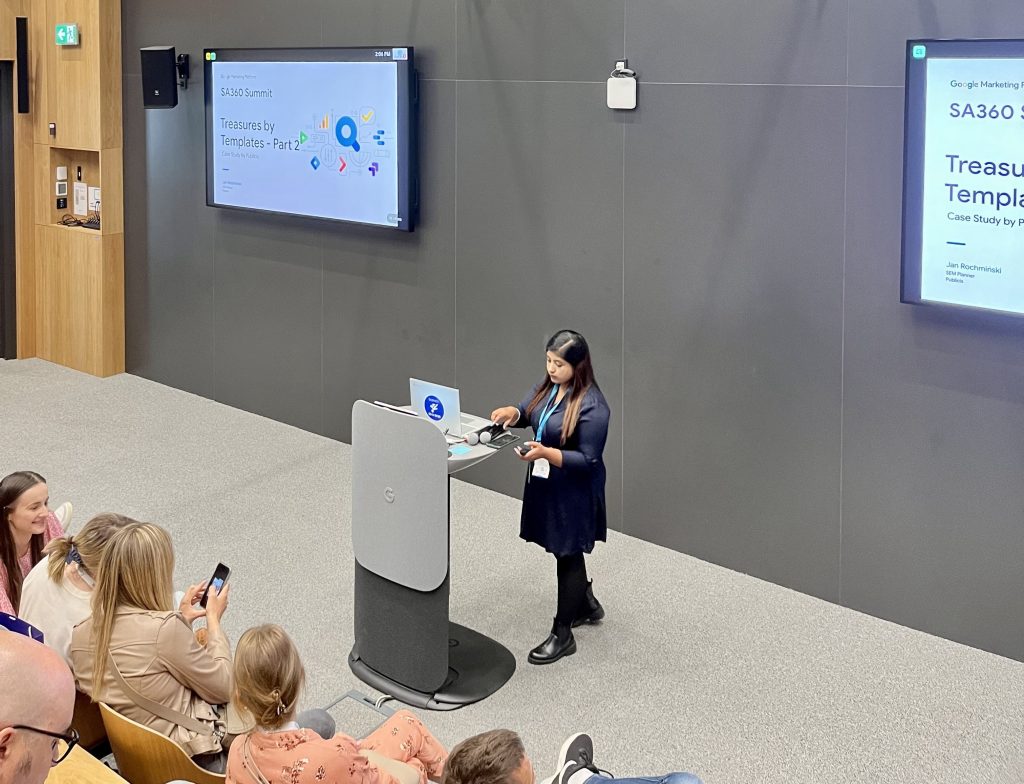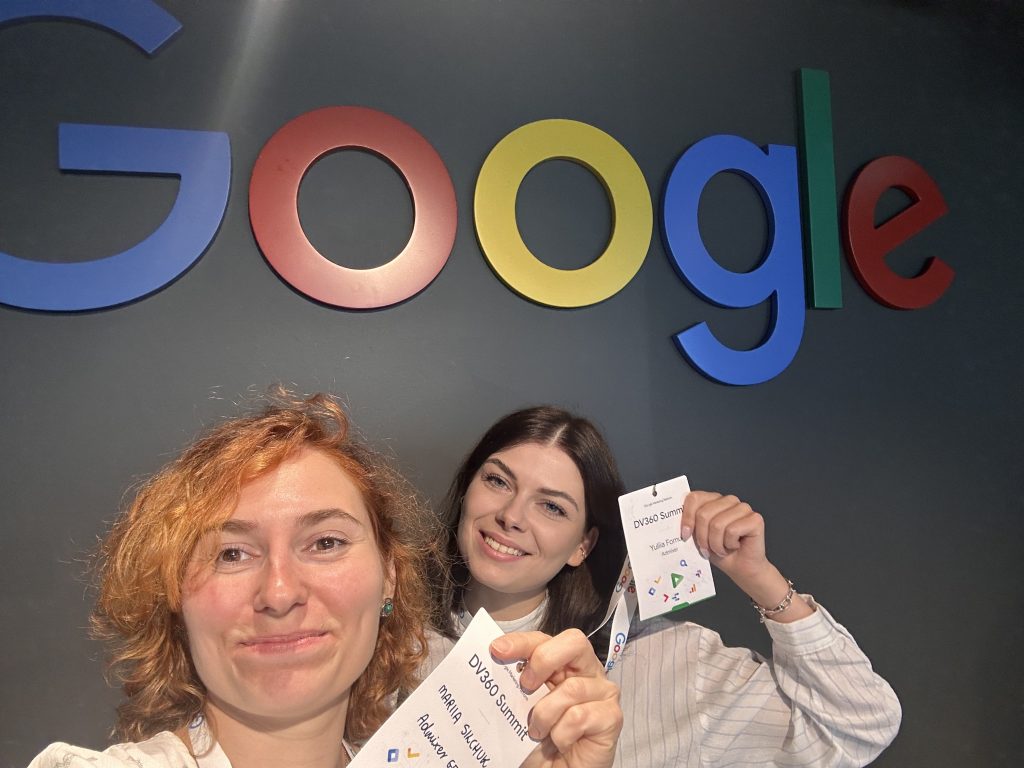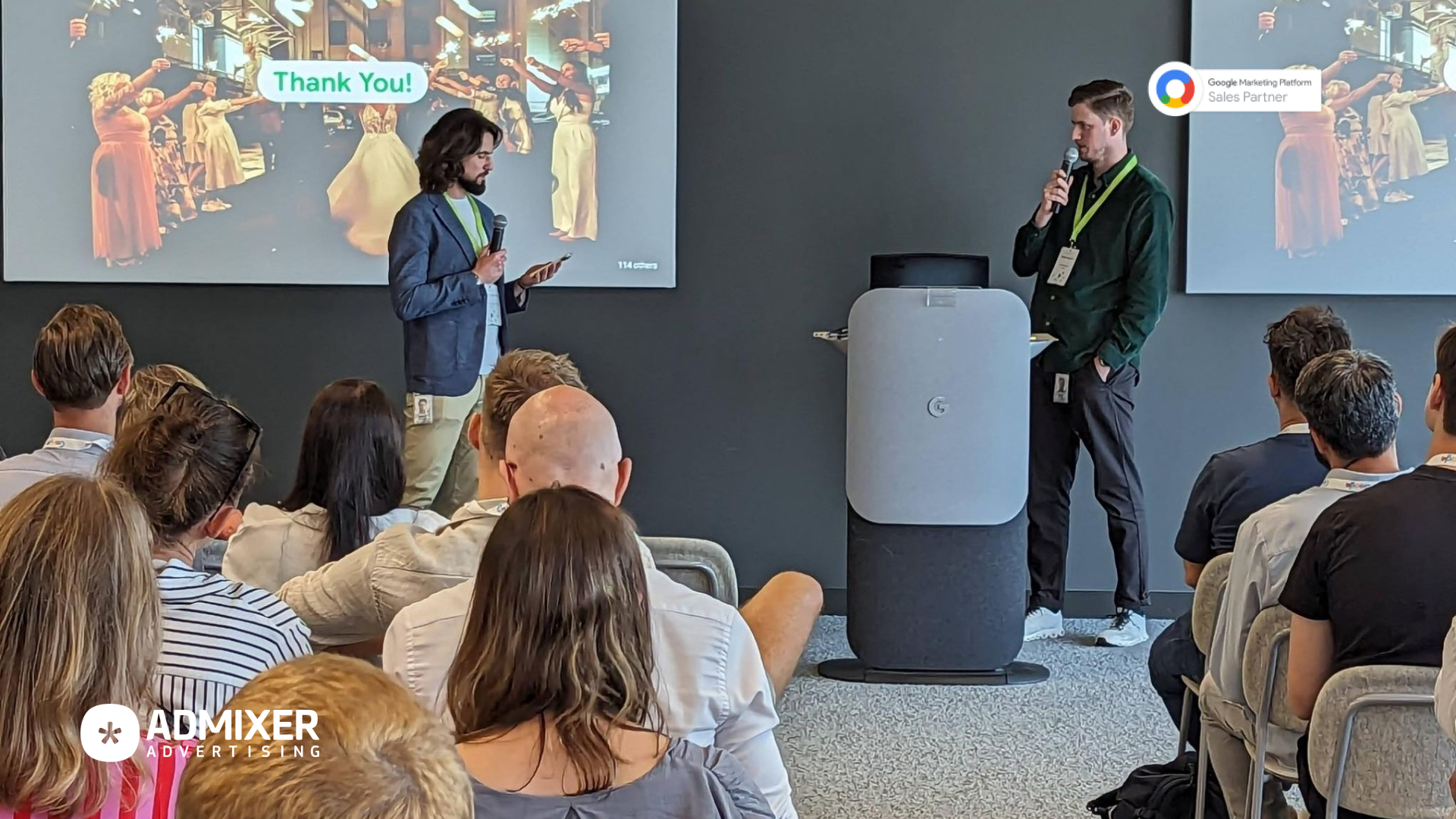On September 12, 2023, the annual Google Marketing Platform (GMP) summit was held in Warsaw, bringing together certified agencies and sales partners of Google from Central and Eastern Europe. This significant event served as a platform for leading marketers to share updates and insights on two crucial GMP tools – Display & Video 360 and Search Ads 360.
Among the attendees was the Admixer Advertising team, eager to learn insights about the evolving landscape of marketing and equip themselves with strategies to navigate this ever-changing world. To ensure you are well-informed, we are delighted to share the most noteworthy and pivotal updates from the summit that industry experts foresee will shape the future of marketing.


Performance of Display & Video 360 campaigns
The first stream of the summit was dedicated to Display & Video 360, a tool for configuring and launching display advertising campaigns. The experts provided insights encompassing campaign planning, ad frequency optimization, performance measurement, and the profound influence of artificial intelligence (AI) on the tool’s evolution.
Speakers underscored a key way to enhance campaign effectiveness, emphasizing the need to adjust ad frequency as an integral facet of brand safety initiatives. It’s crucial to bear in mind that when a user encounters a brand advertisement excessively, it can lead to the formation of a negative perception. Therefore, meticulous control over ad frequency across various tiers of advertising campaigns, including Line Item, Insertion Order, and Campaign, emerges as a pivotal action.
Should you find the need to fine-tune ad frequency at the campaign level, the Optimization view offers the Added Reach widget, which shows both the total count of unique users reached and the increment in user reach attributable to the impression frequency cap. This is a user-friendly way to highlight the positive side of media initiatives.
Furthermore, it’s essential to consider the significance of maintaining flexibility in frequency management, particularly when entering into deals – the agreements involving inventory allocation between the buyer (an advertiser or ad agency) and the seller (a publisher or auction platform).
To save time setting up deals, it’s recommended that you set them up with your primary partner and then use them with any others.
Another component of success when working with DV360 lies in the creation of visually compelling content. The tool provides an opportunity to create personalized creatives that will captivate your target audience’s attention.
During the summit, the conversation also delved into the challenge of reaching audiences in a post-cookie landscape. The Google team is proactively engaging artificial intelligence to create algorithms to calculate reach. These algorithms will draw upon the data from Google users who are engaged with their services. This approach will enable a comprehensive analysis of audience behavior and facilitate the prediction of conversion probabilities, ultimately enhancing the overall effectiveness of campaigns.
The speakers have also emphasized the ongoing shift toward the upgraded Ads Creative Studio. The existing functionality, such as feeds and other essential tools, will seamlessly merge into Ads Creative Studio. Presently, Ads Creative Studio’s primary strength lies in its seamless integration with GMP products and its streamlining of team collaboration processes, leading to increased productivity and work efficiency.
In the broader context of working with DV360 functionality, it’s essential to prioritize aspects like frequency settings, flexibility in deal structures, and reach optimization, as these elements are becoming pivotal components of successful media strategies.
The transition from Targeting Expansion to Optimized Targeting: How it can change ad campaigns
Audience planning and setting within digital advertising campaigns emerged as a focal point for success, as outlined by experts at the summit. Within the DV360 campaign management system, two primary targeting approaches take center stage: Targeting Expansion and Optimized Targeting. The transition between these methods can wield substantial influence over the outcomes of an advertising campaign.
Targeting Expansion, a feature within DV360, empowers you to automatically broaden your ad’s audience reach by incorporating segments that weren’t initially selected. It’s important to remember, however, that audience expansion can potentially lead to increased advertising costs and a potential decrease in targeting precision.
Optimized Targeting uses the power of machine learning algorithms and data analysis to identify specific target audience segments. By deploying Optimized Targeting, DV360 strategically directs its efforts toward users who are most receptive to your advertising message. This targeting approach amplifies the performance of your advertising campaign while mitigating the risk of reaching an unintended audience.
When choosing between these two approaches, it is important to consider business goals and available resources. Each method has its advantages and disadvantages, and the right choice can determine the success of an advertising strategy in DV360.
While leveraging advanced technologies and optimizing campaigns is undeniably crucial, the evaluation of their effectiveness remains equally vital. Experts underscore the significance of a centralized measurement system for assessing performance across various formats and communication channels. This analytical approach plays a crucial role in enhancing the overall efficacy of your campaigns.
The features of SA360
Another part of the summit was dedicated to Search Ads 360 (SA360), specifically focusing on updates and enhancements to the platform’s capabilities for managing advertising campaigns on search engines. In 2022, Google announced the shift to a new version of the tool and, this year started notifying customers about the necessity of transitioning.
The new SA360 interface now closely resembles the Google Ads interface, streamlining the workflow for marketers who work with both products simultaneously.
Among the advantages of the new SA360, the following highlights stand out:
- Automation across search campaigns on Google Ads, Bing, and Yahoo offers to save up to 70% of your time during campaign creation.
- Campaign optimization. Due to leveraging intelligent bidding, cross-channel data-driven attribution, and support for Performax Max campaigns, it’s possible to achieve a remarkable 30% boost in campaign effectiveness.
- Advanced reporting and planning. The Performance Center allows budget forecasting and management, by combining the capabilities of the performance planner from Google Ads and budget management from SA360.
To facilitate the transition to the new SA360 interface, Google has prepared an “Onboarding Checklist” within the “Experience Hub” tab. Experts recommend completing the shift by the end of 2023, as from February 2024, all customers will exclusively use the new interface, with no option to revert to the old one.
Artificial intelligence: Panacea or not
Artificial intelligence continues to influence marketing. Understanding the capabilities of this technology is more important than ever. This is evidenced by statistics the experts shared. According to research conducted by the consulting firm McKinsey, the incorporation of AI into operations has demonstrated the potential to bolster profits by 70% while reducing costs by 28%.
Such statistics also affect marketers, as they place their hopes on AI as a transformation catalyst within the media business market. Presently, the annual growth in media investments has experienced a significant drop, plummeting from 7.9% to a mere 3.3% on an international scale. Simultaneously, agency turnover has seen a notable uptick, surging by 30%.
Current negative socio-economic trends force businesses to look for new approaches and effective solutions. In this context, artificial intelligence emerges as a real savior. AI can be used for optimized targeting, working with audiences, and implementation of custom bidding. This is just the initial step to a new stage in the development of the media business.
Technology is constantly evolving, so marketers need to stay in the loop and keep up with the trends to ensure the success of their advertising campaigns. Admixer Advertising specialists are always in the vortex of news and updates and will help you achieve your goals using the most modern approaches.
Would you like to learn more about Display&Video 360, Search Ads 360, and other Google Marketing Platform products? Leave a request on the website and our specialists will contact you.













